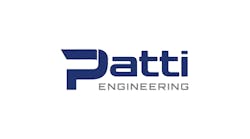By Andreas Pfeiffer
|
I |
n the past 20 years, multiple fieldbus standards have emerged with distributed control as the primary benefit. Most of these bus systems have cycle times in the millisecond range, which, at the time, was sufficient. However, now that fieldbus systems are widely deployed in automation, users and machine builders want to benefit from Ethernet, which offers much faster data rates and legacy benefits.
In IT applications, Ethernet is a suitable solution. However, if Ethernet has any hope of becoming an automation control standard, time-deterministic control must coexist within a single message format with non-real-time data.
There is demand from many automation users and machine builders for faster, more precise fieldbus systems that synchronize the ever-increasing number of PLCs, drives, I/O, sensors and actuators on a single network. There are concrete reasons why Industrial Ethernet is attractive for automation applicationseven at the sensor and actuator level:
1. Ethernets 100 MBit/s data rate offers one to two orders of magnitude more bandwidth than most current fieldbuses, and with the emergence of Gigabyte Ethernet, even greater bandwidth is possible.
2. Internet protocols provide integration and data transparency on all networking levels.
3. Ethernet is a proven, cost-effective world-wide standard.
4. Silicon devices with on-board Ethernet are available from multiple vendors.
Although more than one real-time Ethernet approach was introduced, they were largely ignored by the automation industry because they were not 100% Ethernet-compatible and they did not take advantage of microcontrollers offered with Ethernet as a standard interface.
In November 2001, Ethernet Powerlink (EPL) was introduced, which took advantage of the on-board Fast 100-Mbit/s Ethernet, and was adopted by more than 50 product vendors and service providers.
Since then, more than 40,000 EPL nodes are on duty in demanding applications in packaging, plastics, automotive, robotics or other industries. Tetra Pak, Ferromatik Milacron and ABB Robotics are among more than 200 users and machine builders that support EPL. From the supplier end, drives, I/O, PLCs, infrastructure components and other products are available from companies like Hirschmann, Lenze, Baldor and B&R Automation, with more companies joining all the time.
EPL responds to end user and machine builder demands by featuring microsecond fast time-deterministic cycle times that separate each cycle into time-deterministic (isochronous) and non-real-time (asynchronous) segments. While this message format responds to the microsecond performance demanded, it also addresses issues of data separation by isolating external asynchronous data from isochronous data at the machine level. This single feature alone eliminates out-of-sync data from encroaching into the time-deterministic zone.
EPL, unlike the other Industrial Ethernet solutions announced so far, operates on standard Ethernet with standard silicon. The protocol is available to the public and not controlled by any one, dominant automation supplier. EPL offers connectivity to common IP network topologies, and it relies on proven CANopen device profiles that have been used in industry for over 10 years. Devices and objects are accessible via IP-based protocols thus providing worldwide connectivity via the Internet.
EPL is managed by an open vendor and user group called EPSG, the Ethernet Powerlink Standardization Group. Membership and thus the protocol are available to anyone, and EPL itself has been submitted to the IEC and ISO for worldwide standardization. There are no hidden license costs and no dependencies on ASIC and component vendors. Pre-developed EPL protocols are available from multiple vendors and implementations are currently running on Intel, Freescale, ARM, Altera and other device platforms.
EPSG has just introduced EPL Safety, a Powerlink based protocol extension for safety-related applications. With EPL Safety, it is now possiblefor the first timeto run IEC 61508 safety-related applications up to SIL 4 via a standard Ethernet network.
EPL is an attractive alternative for end users due to its multiple functionality and ability to transmit microsecond-fast time-deterministic control messages as well as information messages. Because EPL relies on widely adopted device profiles developed from popular field bus technology, it provides a low-cost transition and logical enhancement for suppliers of PLCs, drives, I/O and other sensors and actuators.
Finally, because EPL is the only open standard, users will not be obligated to make a decision to largely support only one vendor, an unfortunate outcome, in our view, of the bus wars we all endured through the 1980s and 1990s.
Andreas Pfeiffer is a board member of the Ethernet Powerlink Standardization Group. Learn more about the groups activities at www.ethernet-powerlink.org.



